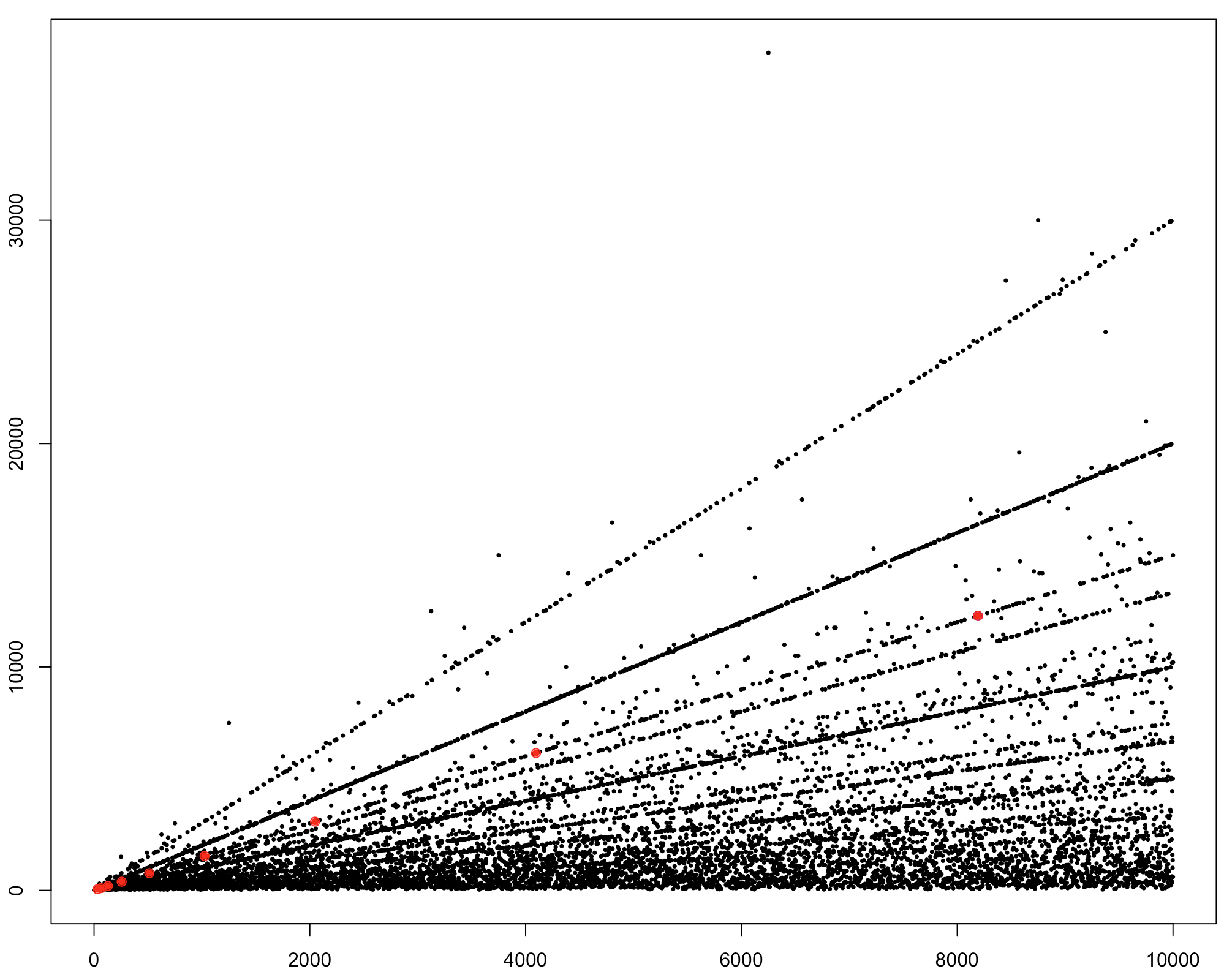Puzzle time - the Fibonacci numbers
-
I think the proof of looping can be seen from the congruence property of modular arithmetic. In particular, "modulo" is a congruence with respect to Fibonacci numbers:
Fib(n) mod m = (Fib(n-1) mod m) + (Fib(n-2) mod m) (for n >= 2)
Since there are only about m^2 possible pairs of numbers in the "mod n" ring, and Fib(n) mod m only depends on the pair of previous numbers (mod m), it follows that the sequence must necessarily loop.
-
I did a tiny bit of programming, and I think it's a nice programming exercise to come up with an elegant way to compute the cycle length of "Fib mod n" sequences.
Here's a 4-liner I came up with.
fibsmod n = map ((`mod` n) . fst) $ iterate (\(a,b) -> (b,a+b)) (0,1) pairIndex a b (x:y:ys) m = if (a == x) && (b == y) then m else pairIndex a b (y:ys) (m+1) p (x:y:ys) = pairIndex x y ys 2 take 100 $ map (p . fibsmod) [2..]It computes the first 100 cycle length:
[3,8,6,20,24,16,12,24,60,10,24,28,48,40,24,36,24,18,60,16,30,48,24,100,84,72,48,14,120,30,48,40,36,80,24,76,18,56,60,40,48,88,30,120,48,32,24,112,300,72,84,108,72,20,48,72,42,58,120,60,30,48,96,140,120,136,36,48,240,70,24,148,228,200,18,80,168,78,120,216,120,168,48,180,264,56,60,44,120,112,48,120,96,180,48,196,336,120,300,50] -
Are you two about to have a 'my dick is smaller' contest?
-
Are you two about to have a 'my dick is smaller' contest?
-
Interesting observation:
Cycle lengths 2^n = 3*2^(n-1) at least within the first 100. Does that continue?
-
@jon-nyc said in Puzzle time - the Fibonacci numbers:
Interesting observation:
Cycle lengths 2^n = 3*2^(n-1) at least within the first 100. Does that continue?
bump for Klaus and his little 4 line program.
@jon-nyc said in Puzzle time - the Fibonacci numbers:
@jon-nyc said in Puzzle time - the Fibonacci numbers:
Interesting observation:
Cycle lengths 2^n = 3*2^(n-1) at least within the first 100. Does that continue?
bump for Klaus and his little 4 line program.
Can you explain? You mean that the cycle length of Fib mod (2^n) is the same as Fib mod (3*2^(n-1))? That doesn't seem to be true.
I uploaded the first 10,000 cycle lengths here, if you want to check this yourself.
https://www.heypasteit.com/clip/0IV18W -
Here's a list of pairs where the first number shows the "n" (but only for powers of 2) and the second one the associated cycle length. Maybe I missunderstood something but your conjecture doesn't seem to hold.
[(2,6),(4,24),(8,60),(16,24),(32,36),(64,120),(128,420),(256,264),(512,516),(1024,72),(2048,600),(4096,1368),(8192,720)] -
-
It looks like linear relations between the cycle length happen quite frequently. This is a scatter plot of the cycle lengths I computed above (haven't used R in a while - fun for plotting data!). Observe all the dotted lines. The points you identified are on one of those lines. Also interesting to see a few outliers.

I have marked the points you are interested in in red. You see that there are way more points on that line.
-
Interesting.
So it turns out Fibonacci cycle lengths a thing people study. They’re called Pisano numbers and understanding them is really about understanding Pisano numbers for prime powers.
A neat property is that if n and m are coprime then period(mn) is least common multiple of period(n) and period(m).
